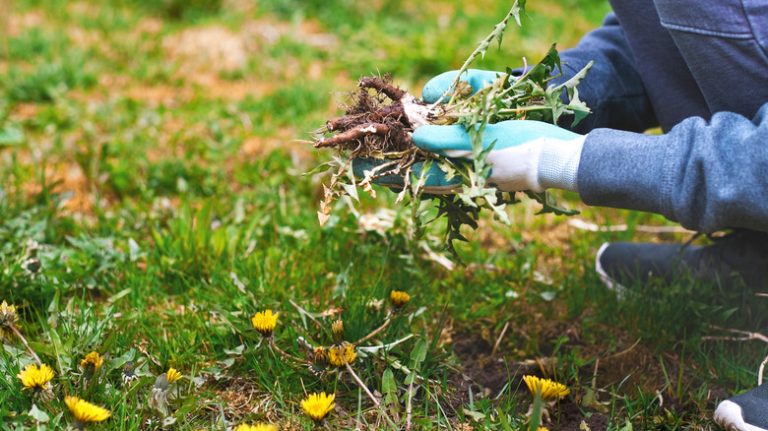Marigolds are one of the most popular and versatile flowers that can be used in any garden or yard. They are known for their vibrant colors and strong fragrance. However, marigolds are susceptible to various diseases that can affect their growth and overall health.
One common disease that affects marigolds is powdery mildew, caused by the fungus Golovinomyces cichoracearum. This disease appears as a white powdery substance on the leaves, stems, and flower heads of the marigold plant. To manage this disease, it is important to plant marigolds in a well-drained site and provide adequate air circulation. Treating with fungicides or using organic alternatives can also help control the spread of powdery mildew.
Another disease that marigolds are prone to is Alternaria leaf spot, caused by Alternaria brassicicola. This disease manifests as dark, irregularly shaped spots on the leaves of the marigold plant. It can be managed by practicing good sanitation and removing infected plant debris. Additionally, planting marigolds in a location with full sun and properly spacing the plants will help prevent the disease from spreading.
Botrytis blight, caused by the fungus Botrytis cinerea, is another common disease that affects marigolds. It causes the flowers to turn brown and rot, often resulting in the loss of blooms. To control this disease, it is important to remove and destroy infected plant material, maintain proper air circulation, and avoid overwatering the plants. Applying a fungicide may also be necessary in severe cases.
Marigolds can also be affected by various pests. Thrips, spider mites, and whiteflies are some of the common insects that can infest marigold plants. These pests can cause damage to the leaves and flowers, affecting the overall health of the plant. To manage pest infestations, it is recommended to regularly inspect the plants and use appropriate insecticides or organic pest control methods.
In addition to diseases and pests, marigolds may also suffer from environmental conditions such as frost, which can damage the blooms and cause them to wither. It is important to cover the plants during frosty periods to protect them. Lastly, marigolds can also experience disorders such as marigold yellows, which is a viral disease that causes stunted growth and yellowing of the leaves. Managing these disorders involves removing and destroying infected plants and planting resistant varieties.
In conclusion, marigolds are beautiful and easy-to-grow annuals, but they are susceptible to various diseases, pests, and environmental conditions. By practicing good gardening techniques such as proper planting, regular inspection, and appropriate control measures, gardeners can ensure that their marigolds stay healthy and free from diseases and pests.
5 Major Diseases found in Marigold
1. Flower Blight: Flower blight, caused by the fungus Erysiphe cichoracearum, is a common disease in marigolds. Infected flowers turn white and may develop a velvety texture. To prevent flower blight, keep the planting site clean and avoid overcrowding. Good air circulation and moderate watering are important conditions for preventing this disease.
2. Tagetes Yellows: Tagetes yellows is a disease caused by a phytoplasma that affects marigolds. Infected plants exhibit yellowing of leaves, stunted growth, and poor flower development. This disease is transmitted by leafhoppers and is more prevalent in warm weather. Managing leafhopper populations and removing infected plants can help control tagetes yellows.
3. Alternaria Leaf Spot: Alternaria leaf spot, caused by the fungus Alternaria alternata, affects marigold foliage. Infected leaves develop brown spots with yellow halos. The disease can spread rapidly in wet and warm conditions. Removing infected leaves and using organic fungicides can help manage alternaria leaf spot.
4. Septoria Leaf Spot: Septoria leaf spot, caused by the fungus Septoria marigoldicola, is another disease that affects marigold foliage. Infected leaves develop numerous small, dark spots with yellow halos. The disease can be managed by removing infected leaves and keeping the garden clean and free from debris.
5. Powdery Mildew: Powdery mildew, caused by the fungus Golovinomyces cichoracearum, is a common disease in marigolds. Infected plants exhibit a white, powdery growth on leaves, buds, and flower heads. Good air circulation, avoiding overhead watering, and spraying with organic fungicides can help control powdery mildew in marigolds.
Marigold Diseases
Marigolds are popular flowering plants that can be grown in gardens and landscapes around the world. They are known for their vibrant colors and ability to attract butterflies. However, like any plant, marigolds are susceptible to diseases and pests that can impact their health and appearance.
One of the most common diseases that affect marigolds is powdery mildew. This fungal disease appears as a white powdery coating on the leaves and stems of the plant. It can be caused by a variety of factors, including high humidity, poor air circulation, and overcrowding. To control powdery mildew, it is important to plant marigolds in a sunny location with good air circulation and to avoid overcrowding.
Another common disease that affects marigolds is botrytis blight. This fungal disease causes gray mold to develop on the flowers and foliage of the plant. It is often spread by insects, such as whiteflies, and can be controlled by removing infected plant material and spraying the plant with an organic fungicide.
Marigolds can also be susceptible to leaf spot diseases, such as Alternaria leaf spot and Tagetes leaf spot. These diseases are characterized by dark spots on the leaves and can be controlled by planting disease-resistant varieties and practicing good garden sanitation.
Spider mites are a common pest that can infest marigolds and cause damage to the foliage. These tiny pests are difficult to see with the naked eye but can be identified by the fine webbing they create. To control spider mites, it is important to regularly inspect the plants for signs of infestation and to spray them with an organic insecticide if necessary.
Rabbits can also be a problem for marigolds, especially in areas where they are prevalent. These pests can eat the flowers and foliage of the plant, causing significant damage. To protect marigolds from rabbits, it is important to create a barrier around the plants or to use organic rabbit repellents.
In summary, marigolds are beautiful and easy-to-grow annuals that can bring color and life to any garden or landscape. However, they are susceptible to a variety of diseases and pests that can impact their health and appearance. By choosing disease-resistant varieties and practicing good garden sanitation, gardeners can manage marigold diseases and keep their plants healthy and blooming.
Leaf Spots Alternaria sp Septoria tageticola
Leaf spots, caused by Alternaria sp and Septoria tageticola, are common diseases of marigolds. These diseases can be identified by the presence of circular or irregularly shaped spots on the foliage. The spots may be tan, brown, or gray in color and can have a white or gray center.
Leaf spots are often found on the lower leaves of the plant and can spread to the upper leaves if left untreated. In severe cases, the leaves may turn yellow and fall off prematurely, leading to a weakened plant and reduced flower production.
Leaf spots can be managed by planting marigolds in a sunny site with good air circulation. Avoid overcrowding the plants, as this can create a favorable environment for disease development. Water the plants at the base to prevent wetting the foliage, as moist conditions promote the growth of fungal pathogens.
If leaf spots are observed, infected leaves should be removed and destroyed to prevent the spread of the disease. Fungicides may also be used to control leaf spot diseases. Follow the instructions on the fungicide label and apply as directed.
In addition to leaf spots, marigolds can also be affected by other diseases such as powdery mildew, botrytis, and yellows. These diseases can be managed in a similar manner to leaf spots. It is important to keep the garden free of weeds and debris, as these can harbor disease-causing pathogens.
Pests such as aphids, whiteflies, and spider mites can also be a problem for marigolds. These pests can be controlled with insecticidal soaps or other appropriate insecticides. Regular monitoring of the plants is recommended to detect and manage pest populations.
Marigolds are generally low-maintenance annuals that are easy to grow. With proper care and attention, they can provide a beautiful display of flowers in the garden.
Marigolds are also known for their insect-repellent properties, particularly against rabbits, aphids, and butterflies. Their strong aroma and bright colors can help to deter these pests from the garden.
To grow marigolds, sow seeds indoors 4-6 weeks before the last frost date or directly in the garden after the danger of frost has passed. Choose a sunny site with well-drained soil. Space the plants 12-18 inches apart to allow for good air circulation. Keep the soil evenly moist but not wet.
Marigolds can be used in a variety of settings, including borders, containers, and flower beds. They are also commonly used as companion plants, particularly with tomatoes, as they are believed to repel pests such as whiteflies and nematodes.
In conclusion, leaf spots caused by Alternaria sp and Septoria tageticola are common diseases of marigolds. These diseases can be managed by providing the plants with good air circulation, avoiding overcrowding, and removing infected leaves. Fungicides and insecticides can be used as needed to control disease and pest populations. With proper care, marigolds can thrive and provide a beautiful display of flowers in the garden.
Powdery Mildew Golovinomyces syn Erysiphe cichoracearum
Sunflower foliage diseases can be found on marigolds, and one common pest is powdery mildew caused by the Golovinomyces syn Erysiphe cichoracearum fungus. This disease affects the leaves and stems of the marigold plant, causing a white powdery growth to appear. Powdery mildew can also affect the flowers, causing them to become distorted or fail to develop fully.
To keep powdery mildew under control, it is important to provide ideal growing conditions for marigolds. This includes planting them in a sunny site with well-drained soil. Marigolds should be spaced far enough apart to allow good air circulation between plants. Avoid overhead watering, as wet foliage can promote the growth of powdery mildew.
There are several other diseases that can affect marigolds, including alternaria leaf spot, septoria leaf spot, and botrytis blight. These diseases can be controlled by practicing good garden hygiene, such as removing and destroying infected plant material, and by using fungicides when necessary.
Marigolds are also susceptible to pests such as aphids, mites, and caterpillars. These pests can be controlled through the use of insecticides or by attracting beneficial insects such as ladybugs and lacewings to the garden.
In addition to protecting against diseases and pests, marigolds can also be planted to deter rabbits and butterflies from the yard. The strong scent of marigolds can repel rabbits, while the bright colors of the flowers attract butterflies.
Marigolds are easy to grow from seeds and can be sown directly outdoors after the last frost date. They can also be started indoors and transplanted once the weather has warmed. Marigolds are annuals that bloom throughout the summer and into the fall.
In conclusion, powdery mildew caused by the Golovinomyces syn Erysiphe cichoracearum fungus is a common disease that can affect marigolds. To prevent and control this disease, it is important to provide ideal growing conditions, practice good garden hygiene, and use fungicides when necessary. By taking these steps, marigolds can thrive and provide a beautiful display of flowers in your garden.




